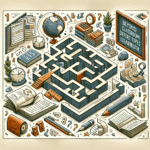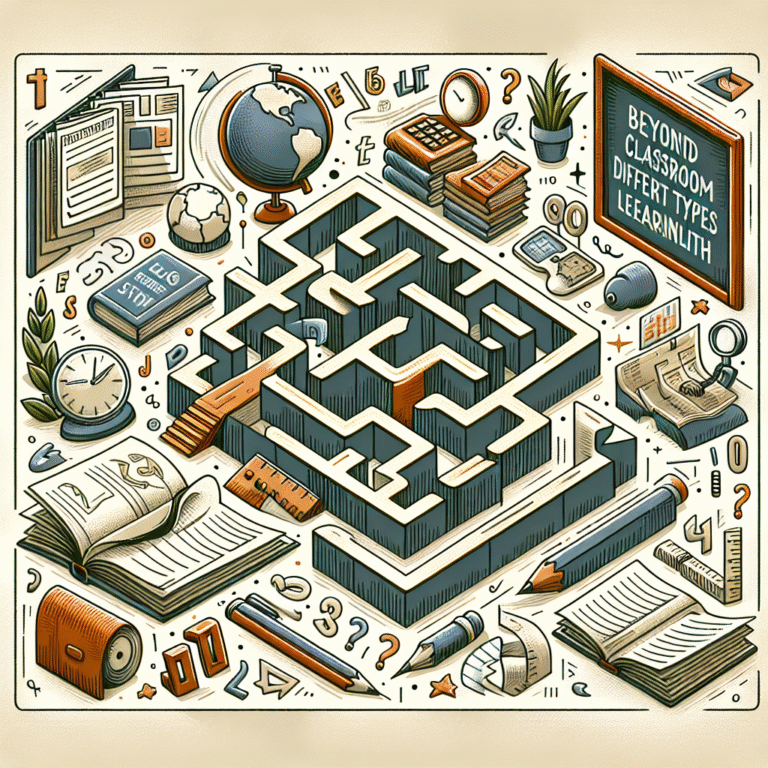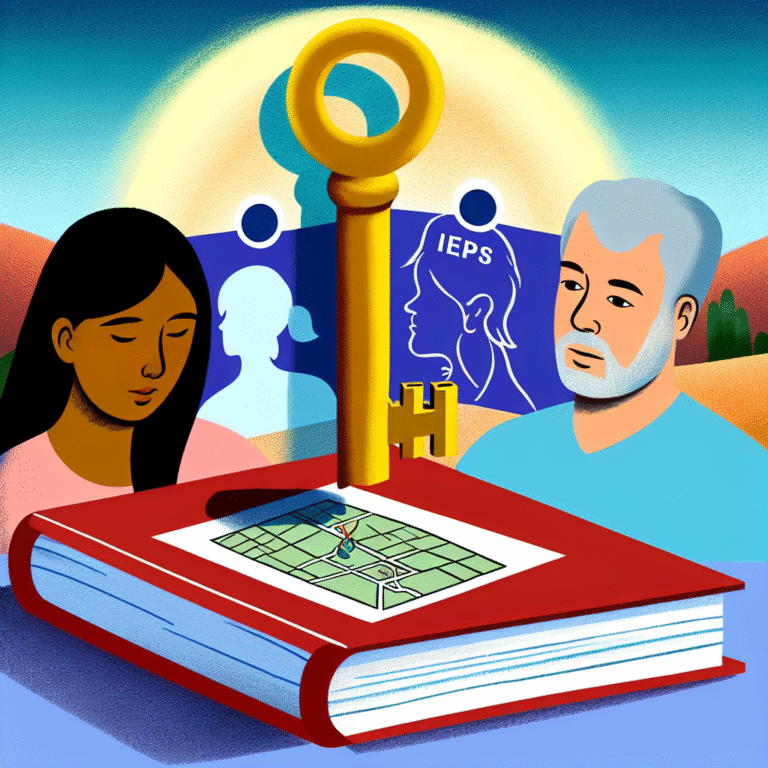
Is It Just a Phase? The Ultimate Guide to Determining Learning Disabilities from Home
Introduction
As parents, educators, or caregivers, we often find ourselves asking, "Is it just a phase?" when our children display behavior that seems concerning, whether it’s difficulty in learning, prolonged distraction, or struggles with reading and writing. Determining learning disabilities can be a complex process, but recognizing early signs is crucial for effective intervention. In this ultimate comprehensive guide, we will explore "Is It Just a Phase? How to Determine Learning Disabilities from Home," providing you with practical insights and actionable steps you can take to better understand your child’s learning needs.
Understanding learning disabilities is not just about academic performance; it’s about fostering a supportive environment for your child’s growth. Let’s dive into the nuances of identifying learning disabilities from the comfort of your home.
Recognizing the Signs: When to Be Concerned
In children, development varies widely. However, certain signs may indicate a learning disability rather than just a developmental phase. Here are some warning signs to watch for:
1. Reading Difficulties
If your child struggles significantly with sounding out words, recognizing letters, or understanding what they read, it might go beyond just a phase.
2. Problems with Math Skills
Difficulty in grasping the concept of numbers, counting, or basic operations can be a red flag. Children experiencing math learning disabilities may grasp concepts slower than their peers.
3. Challenges in Writing
If your child has trouble organizing their thoughts on paper, struggles with spelling, or finds it difficult to express ideas through writing, these could be signs of a specific learning disability.
4. Poor Memory Retention
Children with learning disabilities may find it hard to remember information, whether it’s facts from a lesson or instructions from a parent.
5. Inattention and Impulsivity
While not all instances signify a learning disability, severe attention issues may signal ADHD or other learning challenges.
Case Study: The Story of Jamie
Jamie was a bright child who loved storytelling but struggled with writing assignments. Despite encouragement and practice, Jamie’s essays were unorganized with frequent spelling errors. Upon evaluation, Jamie was diagnosed with dyslexia, which affected her writing skills more than her storytelling ability.
Analysis: Jamie’s case illustrates that a love for language can coexist with learning disabilities, and recognizing early warning signs led her towards appropriate interventions that allowed her to flourish academically.
The Home Environment: What You Can Do
If you suspect your child might have a learning disability, here are techniques and home-based strategies to help identify and address their needs:
Create a Structured Learning Environment
A consistent routine can minimize distractions and create a conducive environment for learning. Establish specific times for homework, reading, and breaks.
Use Visual Aids
Charts, diagrams, and colorful illustrations can make learning engaging. For instance, using a color-coded math chart can help a child visually grasp complex concepts.
Engage in Open Communication
Talk with your child about their difficulties. Validating their feelings and creating an open environment can encourage them to express their challenges freely.
Monitor Progress
Keep a record of your child’s academic work over time. This may help you spot patterns indicative of a learning disability versus a phase.
Reach Out to Teachers and Tutors
If you’re unsure of your child’s performance compared to peers, don’t hesitate to reach out to their teachers. They can offer insights and recommendations.
Case Study: Alex’s Math Journey
Alex often expressed frustration when working on math. Following structured interventions at home, including visual aids and consistent practice, his performance gradually improved. Teachers noted his growing confidence and willingness to tackle math problems.
Analysis: The case of Alex highlights the power of a supportive home environment. Tailored strategies, like the use of visuals and hands-on practice, can significantly impact a child’s learning experience.
Understanding Learning Disabilities: Types and Definitions
Learning disabilities encompass a variety of disorders that affect how individuals process information. Here are common types:
Dyslexia
A reading disorder that affects fluency and comprehension, often leading to difficulties in phonemic awareness and word recognition.
Dyscalculia
This disorder hinders an individual’s ability to understand numbers and perform mathematical calculations.
Dysgraphia
A writing disorder characterized by difficulty in expressing thoughts in written form, typically manifested through poor handwriting and spelling challenges.
Auditory Processing Disorder (APD)
Children with APD may struggle to understand and process auditory information, which can complicate following verbal instructions.
Visual Processing Disorder
Children with this disorder may have difficulty interpreting visual information, impacting their ability to read or discern patterns.
Home-Based Assessments: How to Gauge Learning Issues
While only a professional evaluation can provide a formal diagnosis, these home-based assessments can offer insights into your child’s learning process.
1. Basic Skill Assessments
Create a simple checklist based on age-appropriate skills in reading, writing, and math. Score your child’s abilities over time to detect trends.
Sample Basic Skills Checklist
| Skill | Age Group 6-7 | Age Group 8-9 | Age Group 10-11 |
|---|---|---|---|
| Letter Recognition | 25/26 | 26/26 | – |
| Simple Addition | 10/10 | 15/20 | 20/20 |
| Story Writing | 3 sentences | 5 sentences | 2 paragraphs |
2. Observation and Documentation
Keep a learning journal documenting your observations. Note when struggles occur—are they more frequent in certain subjects or times of day?
3. Utilizing Learning Apps
Many educational websites offer tools and quizzes that can highlight areas of struggle. Use these resources to make learning fun while assessing performance.
4. Peer Comparison
Understanding how your child stacks up against peers can help you determine if a struggling child may need extra support.
Collaborative Strategies with Educators
Establish a partnership with teachers and educators for a more comprehensive understanding:
Regular Communication
Stay updated on your child’s performance and any concerns their teacher may have.
Engage in IEP Conversations
For children already struggling, a formal Individualized Education Program (IEP) may be beneficial, tailored to address learning disabilities.
Involvement in Parent-Teacher Conferences
These discussions can provide deeper insights into your child’s school behavior and academic challenges.
Case Study: Building a Team for Sara
Sara was displaying signs of anxiety during reading sessions at school. After discussing with her teacher and implementing a collaborative plan, including individualized tutoring sessions and peer-assisted learning, Sara grew more confident in her abilities.
Analysis: This case shows that cultivating a collaborative approach with educators can help identify and address learning disabilities effectively.
Effective Interventions: Strategies to Support Learning at Home
Once you’ve recognized potential learning disabilities, implementing interventions can make a significant difference:
1. Multi-Sensory Learning
Incorporate activities that engage multiple senses. For example, use tactile games for learning math through hands-on experiences.
2. Goal-Oriented Tasks
Set achievable, short-term goals that will help build confidence. Celebrate small successes to foster motivation.
3. Assistive Technology
Tools like speech-to-text software can be invaluable for children with dysgraphia or other writing challenges.
4. Regular Breaks
Encourage breaks during homework sessions to reduce frustration and enhance focus. Short 5-10 minute breaks can refresh attention spans.
5. Focus on Strengths
Encourage activities that emphasize your child’s strengths. If your child excels in art, allow them to use their creative skills to express themselves academically.
Conclusion
Navigating the landscape of learning disabilities can be daunting, but with awareness and proactive strategies, you can make meaningful strides in supporting your child. Recognizing that it might not just be a phase but rather a learning disability could empower you to seek the necessary interventions that can pave the way to success.
If you notice possible signs of a learning disability, don’t hesitate to reach out for professional evaluation and support. Remember, early detection is key. Each child is unique, and with the right help, your child can overcome challenges and thrive academically.
FAQs
1. What are the first signs of a learning disability?
Common early signs include difficulty in reading, writing, and math, as well as trouble following instructions or focusing during lessons.
2. Can children outgrow learning disabilities?
While some children may show improvement over time, learning disabilities typically are lifelong challenges that require ongoing support.
3. How can I support my child with a learning disability at home?
Create a structured learning environment, employ visual aids and technology, maintain open communication, and celebrate achievements to provide support.
4. How are learning disabilities diagnosed?
A formal diagnosis typically requires an assessment by a psychologist or educational specialist who uses a variety of tools and methods to evaluate a child’s learning patterns.
5. What resources are available for parents?
Numerous organizations, such as the Learning Disabilities Association of America, provide resources, information, and recommendations for parents seeking support for their children.
This guide served to illuminate the complexities surrounding learning disabilities and inspire proactive measures for assessment and support. As you continue this journey, remember that you are not alone—help is available, and there is hope for every child to find their path to learning success.






